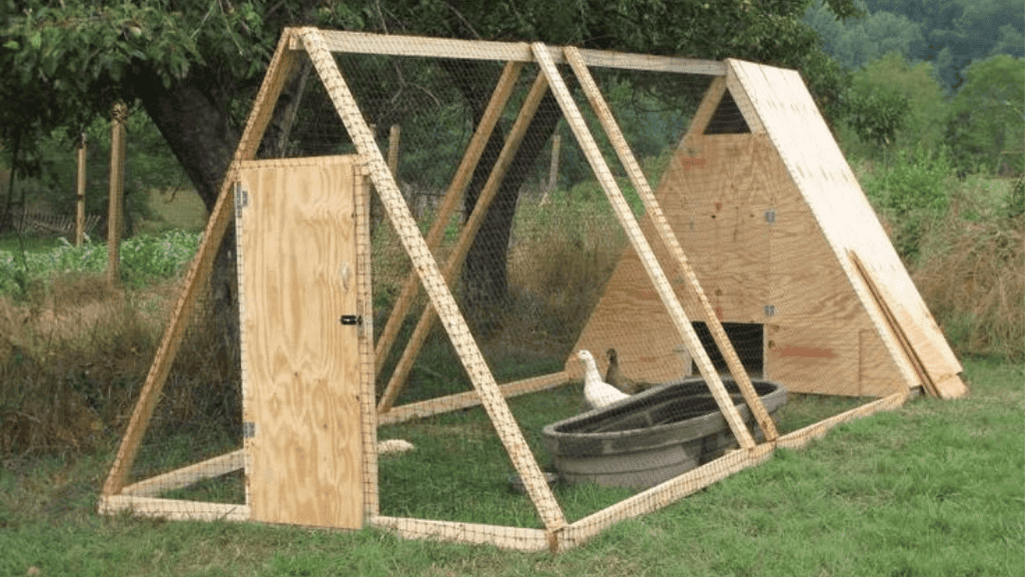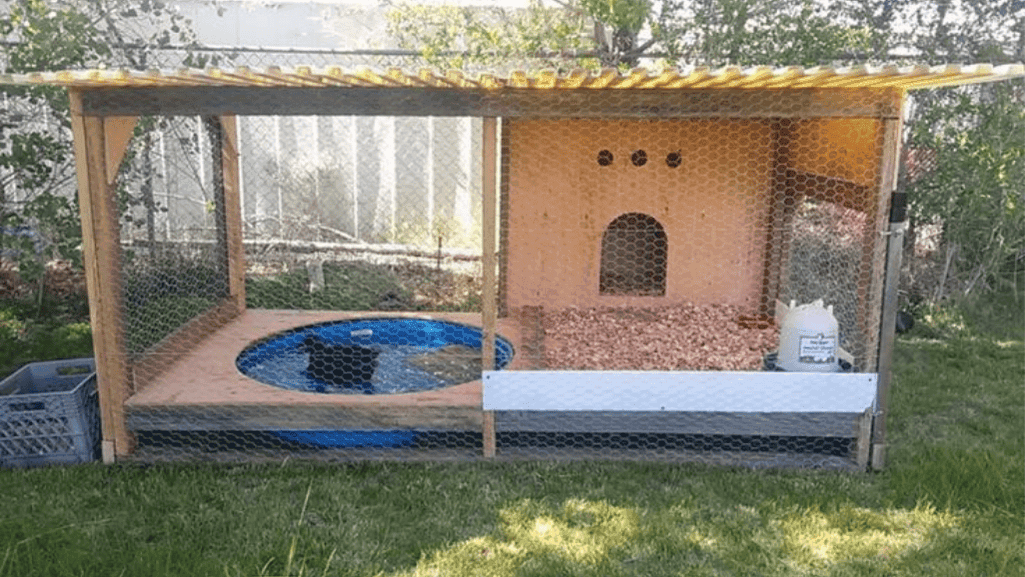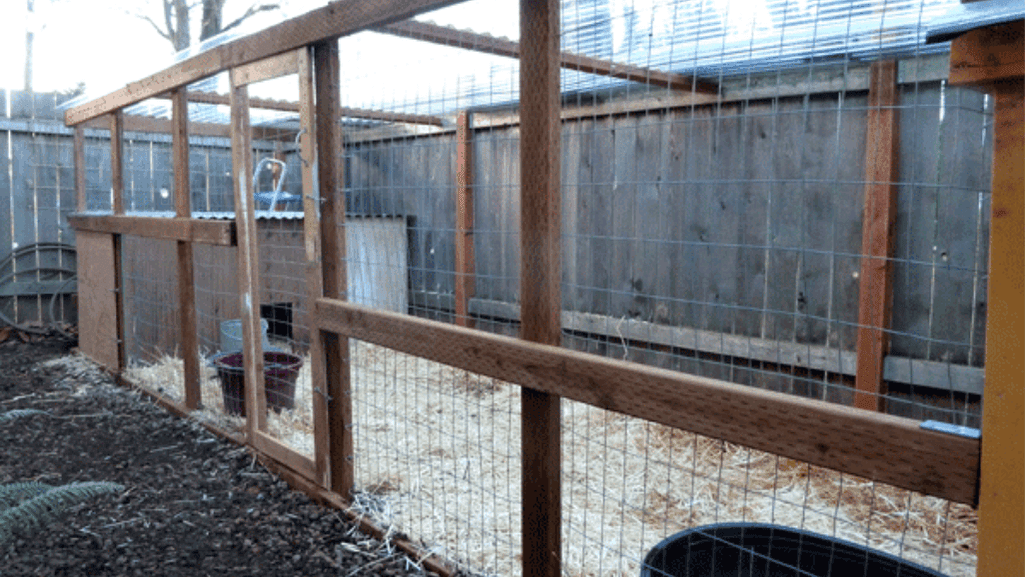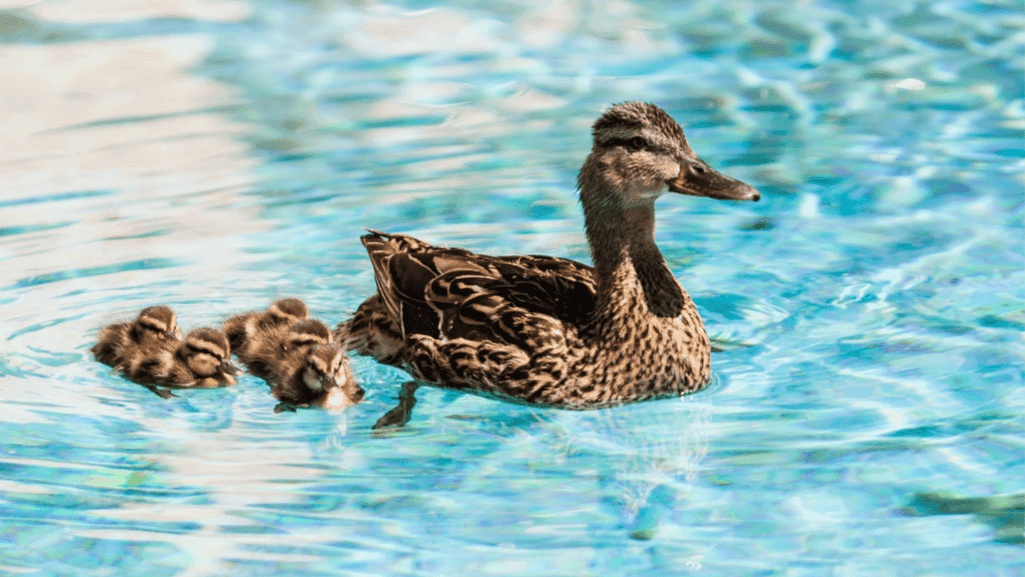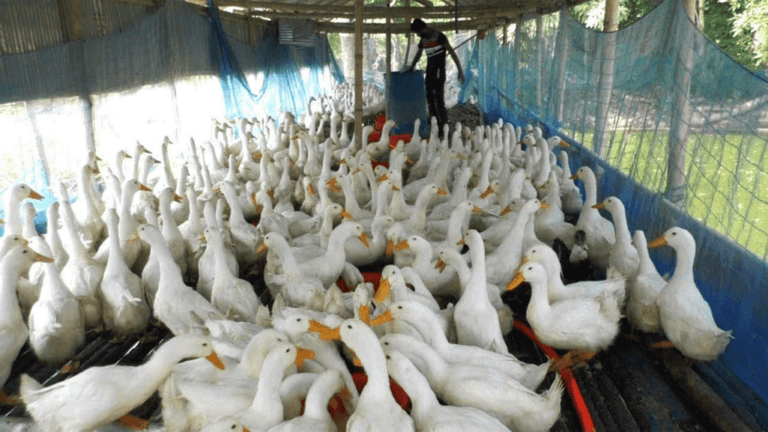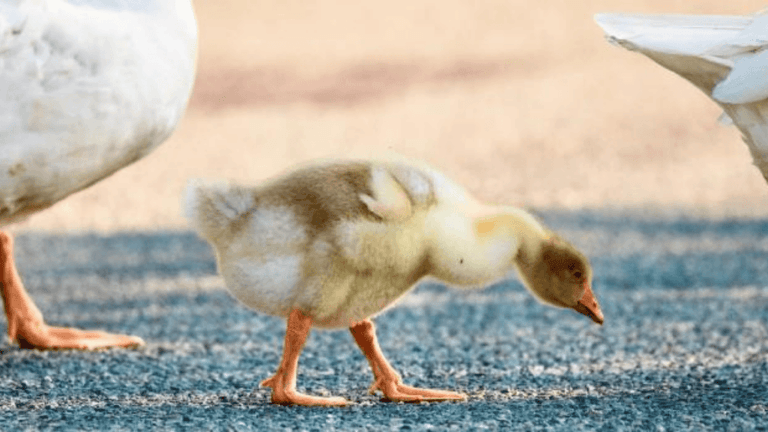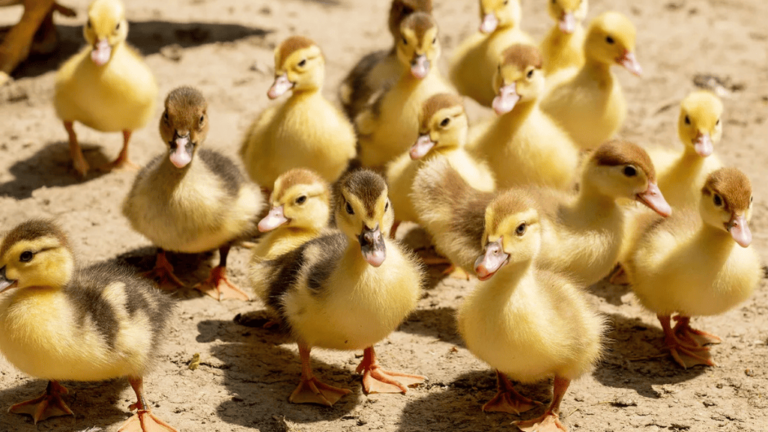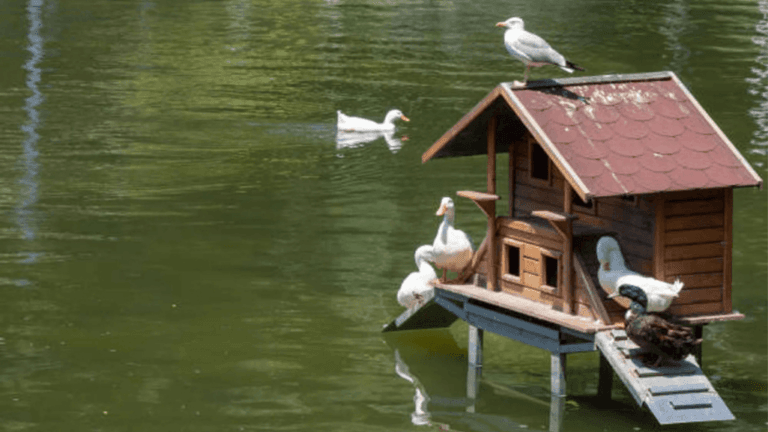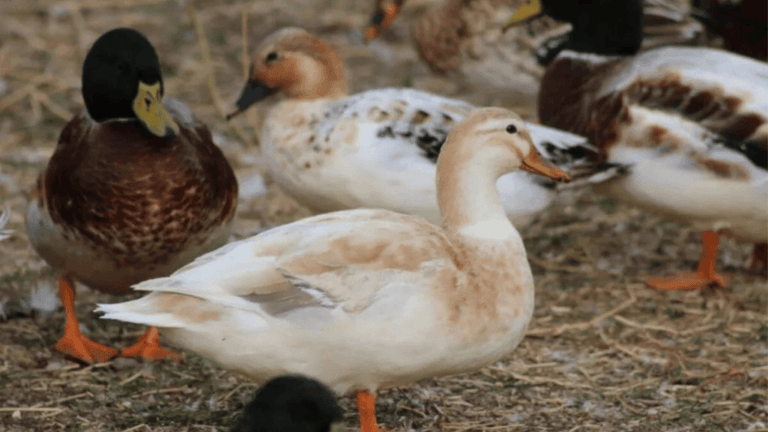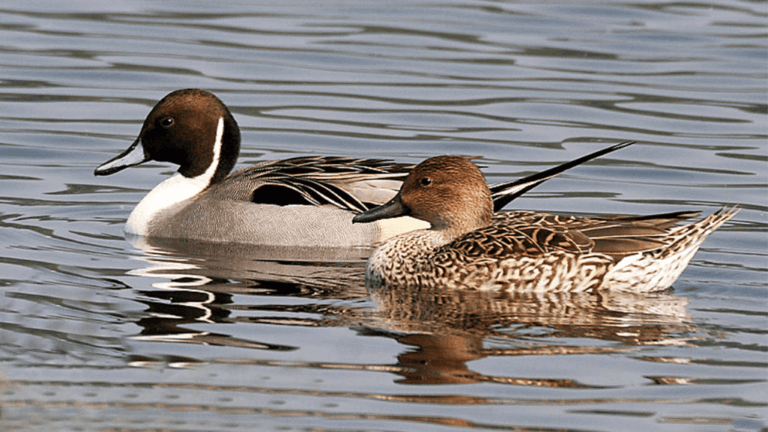Raising ducklings in your backyard is a rewarding and enjoyable experience. To ensure their comfort and safety, creating a cozy DIY duckling pen is essential. With a little creativity and the right materials, you can build a homemade duck shelter. This shelter will provide your feathered friends with a secure and nurturing environment.
When it comes to duck housing ideas, simplicity is key. Ducks are relatively low-maintenance and don’t require elaborate structures. A basic wooden box or repurposed dog house can serve as an excellent foundation for your duckling brooder setup. Aim for a minimum height of 3 feet and allocate at least 4 square feet of floor space per duck.
In addition to the indoor area, your backyard duck enclosure should include a secure outdoor space. This space allows your ducklings to explore and forage. A general rule of thumb is to provide 10-20 square feet of outside space per duck. Ensure that the area is properly fenced to protect your ducklings from potential predators.
Ventilation is crucial in any duckling care guide. Ducks naturally produce more moisture than other poultry, so adequate airflow is essential. Install vents or windows in your homemade duck shelter to promote proper air circulation.
Key Takeaways:
- Ducks require a secure and comfortable shelter with at least 4 square feet of indoor space per duck.
- Provide 10-20 square feet of secure outdoor space per duck for foraging and exploration.
- Ensure proper ventilation to prevent excessive moisture and maintain a healthy environment.
- Use simple materials like wood or repurposed structures to create a cost-effective duckling pen.
- Protect your ducklings from predators by installing appropriate fencing and securing the pen.
By following these guidelines and embracing your DIY skills, you’ll be well on your way to creating a cozy and nurturing space for your beloved ducklings. Stay tuned for more detailed instructions on preparing your duckling pen setup, building the shelter, and enhancing their environment.
Preparing Your Duckling Pen Setup
Before bringing your adorable ducklings home, it’s crucial to prepare a safe and comfy duckling habitat. A well-designed duckling enclosure is key to their health and happiness. It’s all about planning and detail.
Choosing the Right Location
When picking the perfect spot for your duckling pen, think about a few things. Look for a spot close to your home, safe from predators, and near water. It should also be easy to clean and have good drainage. A good location is the first step to a happy duckling habitat.
Gathering Essential Materials
To build a strong and weatherproof duckling shelter, you’ll need some basic materials. You’ll need lumber for the frame, hardware cloth for safety, and roofing panels to keep out the weather. Don’t forget screws, hinges, and latches to hold it all together.
Think about using recycled materials like old wood or plastic totes. They’re cheaper and safe for your ducklings.
Planning the Layout and Design
When designing your duckling pen, think about how many ducks you’ll have and their needs. A good duck pen has areas for sleeping, eating, and swimming. Plus, a secure outdoor area for them to play and explore.
A minimum of three square feet of space per duckling in a brooder is recommended, with additional space beneficial for allowing growing ducks ample room.
Make a sketch of your design and a list of materials. This way, you’ll know exactly what you need before you start. A well-planned duckling enclosure is essential for their health and happiness in your backyard poultry.
Building the Duckling Shelter
Starting your backyard duck keeping adventure means creating a safe home for your ducklings. A well-made duck brooder is key to their health and happiness. It helps them grow strong and healthy.
Constructing the Frame
First, build a strong frame for your duckling housing. Use good lumber and screws. Make sure it’s level and square, fitting your design.
Use plywood, about 8′ x 4′, for the bottom. This keeps your ducklings dry and safe from predators. Add pallets and timber for extra support.
Adding Walls and Roof
Next, add walls to make a safe space for your baby duck shelter. Use plywood or wood boards without gaps. Walls should be at least 1 foot high for your ducklings to move around.
Use 2″ x 4″ timbers for the walls. The front should be 2″ x 6″ timbers, 6′ tall. This adds height and strength.
For a roof, use Ondura panels or weather-resistant materials. Seal all edges and seams to keep it dry. This article on duck gestation and mallard reproduction shows why good conditions are important.
Ensuring Proper Ventilation
Good air flow is vital for a healthy duck brooder setup. Add windows, vents, or covered openings for air. This prevents moisture and keeps air fresh. But, avoid drafts that could chill your ducklings, especially in cold weather.
Building a well-designed, ventilated duckling shelter is the start of successful backyard duck farming. It creates a caring space for your feathered friends to grow and thrive.
Creating a Safe and Comfortable Environment
When setting up your DIY duck enclosure, it’s crucial to create a safe and comfortable environment for your feathered friends. From installing appropriate flooring to providing access to fresh water, every detail matters in ensuring the well-being of your ducklings.
Installing Appropriate Flooring
To prevent leg problems like spraddle leg, install a non-slip flooring material in the duckling shelter, such as rubber shelf liner or textured mats. Avoid using slippery surfaces like newspaper, cardboard, or smooth plastic, which can cause injury to your ducklings. Consider adding a layer of pine shavings or straw over the non-slip flooring for added comfort and insulation. According to the Catskill Animal Sanctuary, ducks need a minimum of 6 square feet of shelter per bird, so ensure your backyard duck pen meets these requirements.
Setting Up a Brooding Area
Young ducklings require a warm and protected brooding area within the shelter. Use a heat lamp with a red bulb or a radiant heat source like the Brinsea EcoGlow to maintain a temperature of 90°F for the first week, decreasing by about 10°F each week until your ducklings are fully feathered. Provide a shallow water dish and feed dispenser in the brooding area, ensuring they are stable and cannot be easily tipped over.
Providing Access to Fresh Water
Ducklings always need access to fresh, clean water for drinking and bathing. Provide a shallow, sturdy water container that allows them to submerge their bills and clean their nostrils, but not deep enough to pose a drowning risk. Change the water frequently to maintain cleanliness and prevent the growth of harmful bacteria.
When it comes to duck farming for beginners, creating a safe and comfortable environment is key. By installing appropriate flooring, setting up a cozy brooding area, and providing access to fresh water, you’ll give your ducklings the best possible start in life.
Remember, whether you’re building a simple homemade duck pen or a more elaborate duck coop, the goal is to create a space that meets your ducklings’ needs and keeps them healthy and happy. With careful planning and attention to detail, your DIY duck run will be a success!
DIY Duckling Pen Accessories and Enhancements
Now that you’ve built a cozy and safe duckling pen, it’s time to add some creative duck pen accessories and enhancements. These additions will make their lives better and let them show their natural behaviors.
One key duckling need is access to water for swimming and playing. Think about adding a small, shallow pool or water feature to their outdoor duck run. Make sure the pool has a gentle slope or ramp for easy access. This will give them hours of fun and keep them clean and healthy.
To protect your ducklings from the weather, install a tarp or shade cloth over part of their outdoor area. This will give them a shaded spot to escape the sun or rain. Having different environments in their waterfowl housing will keep them curious and engaged.
Ducklings enjoy dust bathing to keep their feathers clean and fight off parasites. Set up a shallow container filled with loose soil, sand, or wood ash for them to dust bathe. This simple addition will let them indulge in this natural behavior, keeping them happy and clean.
Ducklings are curious creatures that love to forage and explore. By offering a variety of natural, edible plants and grasses in their outdoor run, you’ll encourage them to engage in foraging behavior, which is essential for their mental and physical well-being.
As you keep improving your ducklings’ living space, remember each addition should help their health and happiness. By giving them a well-rounded environment with duckling supplies and enrichment, you’ll make their life joyful and fulfilling. For more info on hatching and raising ducklings, visit Duck’s New World, a great resource for duck owners.
Conclusion
Building a cozy DIY duckling pen is a fun and rewarding task. It keeps your feathered friends healthy and happy. Think about the pen’s location, materials, shelter, and accessories when you start. This will help you create the best duck habitat DIY project.
Make sure the pen is safe, comfy, and clean. Your ducklings need fresh water, good food, and room to grow and play.
When building the duckling pen construction, remember your ducklings’ needs. They grow fast, getting almost full size by 5 weeks. You’ll need to make their space bigger as they grow. Keeping the brooder and pen clean is key, as ducklings are more skittish than chicks.
A well-made and kept duck pen design lets you enjoy raising these lovely creatures at home. You can have a simple setup or add cool features like a self-filling duck waterer. Your hard work in creating a safe home will be worth it when you see your ducklings happy and healthy.
Embrace the journey of baby duck care. Watch your ducklings flourish in the cozy home you’ve built for them.


